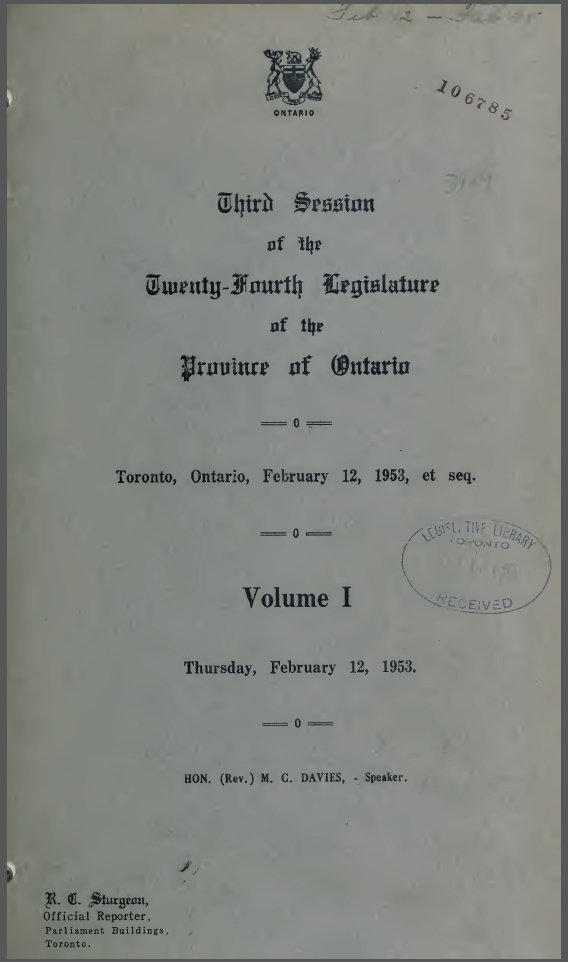|
Ipswich Borough Council
Ipswich Borough Council is the local authority for Ipswich, a non-metropolitan district with Borough status in the United Kingdom, borough status in Suffolk, England. It is the second tier of a two-tier system, fulfilling functions such as refuse collection, housing and planning, with Suffolk County Council providing county council services such as transport, education and social services. The council has been under Labour Party (UK), Labour majority control since 2011. It meets at Ipswich Town Hall and has its main offices at Grafton House. History Ipswich was an ancient borough. In the Domesday Book of 1086 it was described as having Burgess (title), burgesses, implying some form of borough status. The town's first known charter was issued by John, King of England, King John in 1200. The borough was reformed to become a municipal borough in 1836 under the Municipal Corporations Act 1835, which reorganised many boroughs across the country to a standardised model. It was then g ... [...More Info...] [...Related Items...] OR: [Wikipedia] [Google] [Baidu] |
List Of Mayors Of Ipswich Borough, Suffolk
Ipswich was created a Borough in 1200 by charter of King John.Text of charter (translated into English) and image of 1200 Town Seal, see John Wodderspoon, Wodderspoon, J., ''Memorials of the Ancient Town of Ipswich'' (Pawsey (Ipswich): Longman, Brown, Green & Longmans (London) 1850), 'Ancient Incorporation of the Town', pp 75–130, at pp 75–85. Prior to 1835, the officers of Ipswich Corporation, at various times, consisted of: * Two Bailiff of Ipswich, bailiffs * The high steward * Coroner * Twelve Portman (burgess), portmen * Twenty-four common council of headboroughs * An indefinite number of burgesses or freemen * A recorder * A town clerk * Municipal chamberlain, Chamberlains * A water bailiff * A treasurer * Claviger (title), Clavigers (record keepers who held the keys to the miniment chest) * Sergeants-at-mace Municipal Borough of Ipswich The Municipal Corporations Act 1835 created the Municipal Borough of Ipswich. Following this Act, a mayor was elected, together with a ... [...More Info...] [...Related Items...] OR: [Wikipedia] [Google] [Baidu] |
Burgess (title)
A burgess was the holder of a certain status in an English, Irish or Scottish borough in the Middle Ages and the early modern period, designating someone of the burgher class. It originally meant a freeman of a borough or burgh, but later came to be used mostly for office-holders in a town or one of its representatives in the House of Commons of England. Etymology The word was derived in Middle English and Middle Scots from the Old French word ''burgeis'', simply meaning "an inhabitant of a town" (cf. ''burgeis'' or ''burges'' respectively). The Old French word ''burgeis'' is derived from ''bourg'', meaning a market town or medieval village, itself derived from Late Latin ''burgus'', meaning "fortress" or "wall". In effect, the reference was to the north-west European medieval and renaissance merchant class which tended to set up their storefronts along the outside of the city wall, where traffic through the gates was an advantage and safety in event of an attack was easily a ... [...More Info...] [...Related Items...] OR: [Wikipedia] [Google] [Baidu] |
Non-metropolitan District
Non-metropolitan districts, or colloquially "shire districts", are a type of Districts of England, local government district in England. As created, they are sub-divisions of non-metropolitan county, non-metropolitan counties (colloquially ''shire counties'') in a two-tier arrangement. Non-metropolitan districts with Borough status in the United Kingdom, borough status are known as ''boroughs'', able to appoint a Mayors in England, mayor and refer to itself as a borough council. Some shire counties, for example Cornwall, now have no sub-divisions so are a single non-metropolitan district. Typically, a district will consist of a market town and its more rural hinterland. However, districts are diverse, with some being mostly urban (such as Dartford) and others more polycentric (such as Thurrock). Structure Non-metropolitan districts are subdivisions of English non-metropolitan county, non-metropolitan counties which have a two-tier structure of local government. Two-tier non-m ... [...More Info...] [...Related Items...] OR: [Wikipedia] [Google] [Baidu] |
2010 United Kingdom General Election
The 2010 United Kingdom general election was held on Thursday 6 May 2010, to elect 650 Members of Parliament (or MPs) to the House of Commons of the United Kingdom, House of Commons. The first to be held after the minimum age for candidates was reduced from Electoral Administration Act 2006, 21 to 18, it resulted in the Brown ministry, Labour government losing its 2005 United Kingdom general election, 66-seat majority to the Shadow Cabinet of David Cameron, Conservative opposition; however, with the Conservative Party (UK), Conservatives only having 306 elected MPs, this election resulted in the first hung parliament since February 1974 United Kingdom general election, February 1974. This election marked the start of a Conservative government that would last for 14 years until its ousting in 2024 United Kingdom general election, 2024. For the leaders of all three major political parties, this was their first general election contest as party leader, something that had last been ... [...More Info...] [...Related Items...] OR: [Wikipedia] [Google] [Baidu] |
Boundary Committee For England
The Boundary Committee for England was a statutory committee of the Electoral Commission, an independent body set up by the UK Parliament. The committee's aim was to conduct thorough, consultative and robust reviews of local government areas in England, and for its recommendations to be evidence-based, accurate and accepted. The Boundary Committee was abolished in 2010, with its functions assumed by a new Local Government Boundary Commission for England. The committee's responsibilities related solely to local government boundaries: responsibility for parliamentary boundaries lies with the Boundary Commission for England, a non-departmental public body of the Ministry of Housing, Communities and Local Government. History/establishment On 1 April 2002 responsibility for electoral reviews in England transferred to the Electoral Commission. On the same day the Boundary Committee for England became a statutory committee of the commission. The committee undertook electoral reviews a ... [...More Info...] [...Related Items...] OR: [Wikipedia] [Google] [Baidu] |
Felixstowe
Felixstowe ( ) is a port town and civil parish in the East Suffolk District, East Suffolk district, in the county of Suffolk, England. The estimated population in 2017 was 24,521. The Port of Felixstowe is the largest Containerization, container port in the United Kingdom. Felixstowe is approximately northeast of London. History There are competing theories as to how the name of Felixstowe arose. One is that the town is named after Felix of Burgundy, a saint and the first bishop of the East Angles in the seventh century, although this is unlikely as the name Felixstowe is not recorded for almost 900 years. An alternative etymology is from the Anglo-Saxon or Old English name "Filicia" and "stōw", meaning a place of location. Literally Filicia's place. The earliest recorded names "Filchestou" from 1254, and "Filchestowe" in 1291 support this idea. It is possible that the later reworking of Filicia/Filche was made with the intention of referencing Felix of Burgundy. The old Feli ... [...More Info...] [...Related Items...] OR: [Wikipedia] [Google] [Baidu] |
Unitary Authorities Of England
In England, a unitary authority or unitary council is a type of local authority responsible for all local government services in an area. They combine the functions of a non-metropolitan county council and a non-metropolitan district council, which elsewhere in England provide two tiers of local government. The district that is governed by a unitary authority is commonly referred to as a unitary authority area or unitary area. The terms unitary district and, for those which are coterminous with a county, unitary county are also sometimes used. The term unitary authority is also sometimes used to refer to the area governed, such as in the ISO 3166-2:GB standard defining a taxonomy for subdivisions of the UK, and in colloquial usage. Unitary authorities are constituted under the Local Government Act 1992, which amended the Local Government Act 1972 to allow the existence of non-metropolitan counties that do not have multiple districts. Most were established during the 1990s, ... [...More Info...] [...Related Items...] OR: [Wikipedia] [Google] [Baidu] |
Hansard
''Hansard'' is the transcripts of parliamentary debates in Britain and many Commonwealth of Nations, Commonwealth countries. It is named after Thomas Curson Hansard (1776–1833), a London printer and publisher, who was the first official printer to the Parliament of the United Kingdom, Parliament at Westminster. Origins Though the history of the ''Hansard'' began in the British Parliament, each of Britain's colonies developed a separate and distinctive history. Before 1771, the British Parliament had long been a highly secretive body. The official record of the actions of the House was publicly available but there was no record of the debates. The publication of remarks made in the House became a breach of parliamentary privilege, punishable by the two Houses of Parliament (UK), Houses of Parliament. As the populace became interested in parliamentary debates, more independent newspapers began publishing unofficial accounts of them. The many penalties implemented by the governmen ... [...More Info...] [...Related Items...] OR: [Wikipedia] [Google] [Baidu] |
Mayors In England
In England, the offices of mayor and lord mayor have long been ceremonial posts, with few or no duties attached to them. In recent years they have doubled as more influential political roles while retaining the ceremonial functions. A mayor's term of office denotes the municipal year. Traditionally mayors and provosts have been elected by town, borough and city councils. Since 2000, several districts now have directly elected mayors with extensive powers. The role of the chair of a district council is exactly the same as the mayor of a borough council; they have the same status as first citizen, after the Sovereign, in their district, but they are not addressed as mayor. There are also devolved regional metro Mayors responsible for combined authorities over larger regional-based geographic areas, which are completely different and more powerful. Election In England, where a borough or a city is a local government district or a civil parish, the mayor is elected annually by the ... [...More Info...] [...Related Items...] OR: [Wikipedia] [Google] [Baidu] |
Local Government Act 1972
The Local Government Act 1972 (c. 70) is an act of the Parliament of the United Kingdom that reformed local government in England and Wales on 1 April 1974. It was one of the most significant acts of Parliament to be passed by the Heath Government of 1970–74. The act took the total number of councils in England from 1,245 to 412 (excluding parish councils), and in Wales to 45. Its pattern of two-tier metropolitan and non-metropolitan county and district councils remains in use today in large parts of England, although the metropolitan county councils were abolished in 1986, and both county and district councils have been replaced with unitary authorities in many areas since the 1990s. In Wales, too, the Act established a similar pattern of counties and districts, but these have since been entirely replaced with a system of unitary authorities. Elections were held to the new authorities in 1973, and they acted as "shadow authorities" until the handover date. Elect ... [...More Info...] [...Related Items...] OR: [Wikipedia] [Google] [Baidu] |
East Suffolk County Council
East Suffolk County Council was the county council of the administrative county of East Suffolk in east England. It came into its powers on 1 April 1889 and acted as the governing authority for the county until it was amalgamated with West Suffolk County Council to form Suffolk County Council in 1974. The county council was based at East Suffolk County Hall in Ipswich Ipswich () is a port town and Borough status in the United Kingdom, borough in Suffolk, England. It is the county town, and largest in Suffolk, followed by Lowestoft and Bury St Edmunds, and the third-largest population centre in East Anglia, .... References Former county councils of England 1889 establishments in England 1974 disestablishments in England History of Suffolk {{UK-poli-stub ... [...More Info...] [...Related Items...] OR: [Wikipedia] [Google] [Baidu] |


